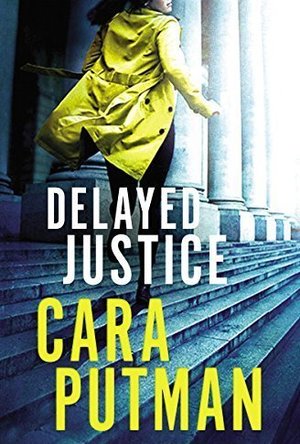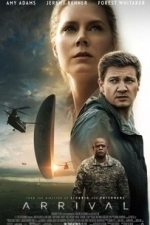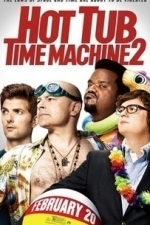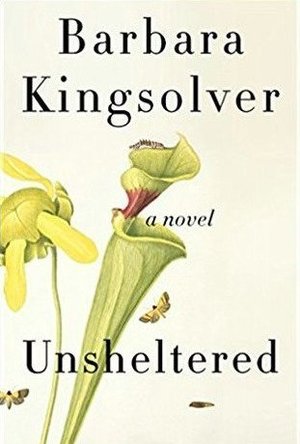Search
Search results
Gareth von Kallenbach (980 KP) rated Jumanji: The Next Level (2019) in Movies
Dec 15, 2019
I said this when I reviewed Jumanji: Welcome to the Jungle, but Jumanji was one of my favorite movies going up. I was extremely reluctant to see the 2017 film. However, I walked out of the theater happy as can be. The movie wasn’t perfect, but it was charming and entertaining, and I felt it was a good modernization of the Jumanji experience.
Then they announced the sequel, and all that fear and panic (not much, but you know… melodrama) kicked back in. Given the state of some sequels these days, I couldn’t imagine how they would be able to do this, and do this well. But I had hopes considering how good the previous entry in the franchise was. Could it be just as good?
The Jumanji: The Next Level releases 2 years after Welcome to the Jungle, and just as much time has passed for our four heroes: Spencer (Alex Wolff), Fridge (Ser’Darius Blain), Bethany (Madison Iseman), and Martha (Morgan Turner). We see the four friends leading their different lives and getting excited to reunite over the holidays.
Everyone, except for Spencer that is. Spencer missed the feeling he had as Doctor Smolder Bravestone (Dwayne Johnson) in Jumanji, so he decides to try and fix the game and re-enter to recapture that feeling. The game was smashed to pieces in the last movie, but Spencer retrieved it and it’s been sitting his basement ever since.
The next day, when the four adventurers are supposed to be meeting for brunch, the remaining three get worried when Spencer doesn’t show. So they head over to Spencer’s place to find Spencer’s Grandfather, Eddie (Danny Devito), and an old friend, Milo (Danny Glover), who also don’t know where he is. Soon they discover the broken remnants of the game and that they’ve been fixed (sorta) and eventually they realize that Spencer has gone into the game again.
They decide to head back in, but somethings a little different this time around, as both Eddie and Milo get pulled into the game as well. All our game characters return: Bravestone, Professor Sheldon “Shelly” Oberon (Jack Black), Franklin “Mouse” Finbar (Kevin Hart), and Ruby Roundhouse (Karen Gillan). But will our young adventurers be controlling the same characters, and what of Eddie and Milo? I can’t say without spoiling so much more.
Now that we have the description out of the way, I will say that I loved this film. Not quite as much as the previous entry, though. I didn’t have high hopes for The Next Level as the trailers and commercials just seemed to be overselling certain aspects of the film, but the film was great.
A good follow up story, excellent acting from our four mains, and enough changeup to allow it to not be essentially the same movie as the first. The acting is great. The plot, while a little predictable, was good as well. The music and score really set the tone and pace of the new Jumanji movies, and in such a good way.
One of the only real criticism I had was that Johnson became a little annoying with his characterization for most of the movie in this film, but that could be intended. A good pallet cleanser, though, was Kevin Hart as he literally played the polar opposite and it was a good balance. The other issue I had was that the finale of the third act seemed a little cheated. It was so rushed, relied heavily on the video game trope and never explained why what happened did happen.
Overall, though, this film is a worthy successor to Welcome to the Jungle and you should definitely check it out. Good for the family, just like the first. I personally cannot wait to see what happens in the next film. There is an obvious set up for third in the reboot, or it could be just left as is. Such is the way of Jumanji.
4 out of 5 stars.
Then they announced the sequel, and all that fear and panic (not much, but you know… melodrama) kicked back in. Given the state of some sequels these days, I couldn’t imagine how they would be able to do this, and do this well. But I had hopes considering how good the previous entry in the franchise was. Could it be just as good?
The Jumanji: The Next Level releases 2 years after Welcome to the Jungle, and just as much time has passed for our four heroes: Spencer (Alex Wolff), Fridge (Ser’Darius Blain), Bethany (Madison Iseman), and Martha (Morgan Turner). We see the four friends leading their different lives and getting excited to reunite over the holidays.
Everyone, except for Spencer that is. Spencer missed the feeling he had as Doctor Smolder Bravestone (Dwayne Johnson) in Jumanji, so he decides to try and fix the game and re-enter to recapture that feeling. The game was smashed to pieces in the last movie, but Spencer retrieved it and it’s been sitting his basement ever since.
The next day, when the four adventurers are supposed to be meeting for brunch, the remaining three get worried when Spencer doesn’t show. So they head over to Spencer’s place to find Spencer’s Grandfather, Eddie (Danny Devito), and an old friend, Milo (Danny Glover), who also don’t know where he is. Soon they discover the broken remnants of the game and that they’ve been fixed (sorta) and eventually they realize that Spencer has gone into the game again.
They decide to head back in, but somethings a little different this time around, as both Eddie and Milo get pulled into the game as well. All our game characters return: Bravestone, Professor Sheldon “Shelly” Oberon (Jack Black), Franklin “Mouse” Finbar (Kevin Hart), and Ruby Roundhouse (Karen Gillan). But will our young adventurers be controlling the same characters, and what of Eddie and Milo? I can’t say without spoiling so much more.
Now that we have the description out of the way, I will say that I loved this film. Not quite as much as the previous entry, though. I didn’t have high hopes for The Next Level as the trailers and commercials just seemed to be overselling certain aspects of the film, but the film was great.
A good follow up story, excellent acting from our four mains, and enough changeup to allow it to not be essentially the same movie as the first. The acting is great. The plot, while a little predictable, was good as well. The music and score really set the tone and pace of the new Jumanji movies, and in such a good way.
One of the only real criticism I had was that Johnson became a little annoying with his characterization for most of the movie in this film, but that could be intended. A good pallet cleanser, though, was Kevin Hart as he literally played the polar opposite and it was a good balance. The other issue I had was that the finale of the third act seemed a little cheated. It was so rushed, relied heavily on the video game trope and never explained why what happened did happen.
Overall, though, this film is a worthy successor to Welcome to the Jungle and you should definitely check it out. Good for the family, just like the first. I personally cannot wait to see what happens in the next film. There is an obvious set up for third in the reboot, or it could be just left as is. Such is the way of Jumanji.
4 out of 5 stars.
MaryAnn (14 KP) rated Delayed Justice (Hidden Justice #3) in Books
Mar 5, 2019
She had long given up the desire to be loved. Now she only needed to be heard. Jaime Nichols went to law school to find the voice she never had as a child, and her determination to protect girls and women in the path of harm drives her in ways both spoken and unspoken. As Jamie, now a criminal defense attorney, prepares to press charges against someone who wronged her long ago, she must face not only her demons but also the unimaginable forces that protect the powerful man who tore her childhood apart. Chandler Bolton, a retired veteran, is tasked with helping a young victim who must testify in court—and along with his therapy dog, Aslan, he’s up for the task. When he first meets Jaime, all brains, beauty, and brashness, he can’t help but be intrigued. As Chandler works to break through the wall Jaime has built around herself, the two of them discover that they may have more to offer one another than they ever could have guessed—and that together, they may be able to help this endangered child. This thrilling installment of the Hidden Justice series explores the healing power of resolution and the weight of words given voice. And as Jaime pursues delayed justice of her own, she unearths eternal truths that will change the course of her life.
My Thoughts: Cara Putman has written a powerful novel that focuses on issues we see every day. This is a novel about strength, recovery, trust and finding hope in God. This is a fast-moving story-line that keeps the reader's interest, there are no dull moments in this novel.
The characters were easy for the reader to identify with. Jaime has worked hard to work through her trauma and to seek justice. Chandler the veteran who suffers from mild PTSD. The author did a wonderful job with Chandler, a man who has also with the help of Aslan push past his trauma. As I said the author has touched on topics that I believe everyone has or knows someone touched by these traumas. The author has done a wonderful job bringing these to the readers' attention and showing that with counseling, the victims can obtain justice and freedom from the past.
I enjoyed that C.S. Lewis' "The Lion, the Witch and the Wardrobe" from "Narnia" were brought into the storyline. I immediately fell in love with Aslan and the job he performed in the story.
This was a wonderful and a joy to read. I highly recommend this one, especially to those who enjoy action and suspense with a little romance mixed in.
My Thoughts: Cara Putman has written a powerful novel that focuses on issues we see every day. This is a novel about strength, recovery, trust and finding hope in God. This is a fast-moving story-line that keeps the reader's interest, there are no dull moments in this novel.
The characters were easy for the reader to identify with. Jaime has worked hard to work through her trauma and to seek justice. Chandler the veteran who suffers from mild PTSD. The author did a wonderful job with Chandler, a man who has also with the help of Aslan push past his trauma. As I said the author has touched on topics that I believe everyone has or knows someone touched by these traumas. The author has done a wonderful job bringing these to the readers' attention and showing that with counseling, the victims can obtain justice and freedom from the past.
I enjoyed that C.S. Lewis' "The Lion, the Witch and the Wardrobe" from "Narnia" were brought into the storyline. I immediately fell in love with Aslan and the job he performed in the story.
This was a wonderful and a joy to read. I highly recommend this one, especially to those who enjoy action and suspense with a little romance mixed in.
Movie Metropolis (309 KP) rated Arrival (2016) in Movies
Jun 11, 2019
Thrilling from start to finish
Sci-fi seems to be having somewhat of a renaissance recently, that is, if you don’t count Independence Day: Resurgence which could’ve easily derailed the whole genre, never mind just the franchise.
What with last year’s The Martian, the rebirth of Star Wars and the upcoming Passengers, sci-fi is really getting its mojo back. The subject of this review, Arrival, has been hailed as a masterpiece across the Atlantic. But is it worthy of such a strong adjective?
From the director of Prisoners and Sicario; Arrival is not only one of the best sci-fi films of the last year, it’s up there with the genre’s greatest assets. We’re talking a Close Encounters level of good.
Linguistics professor Louise Banks (Amy Adams) leads an elite team of investigators when humongous spaceships touch down in 12 locations around the world. As nations teeter on the verge of global war, Banks and her crew must race against time to find a way to communicate with the extra-terrestrial visitors. Hoping to unravel the mystery, she takes a chance that could threaten her life and quite possibly all of mankind.
Amy Adams leads a pleasing cast that includes commanding turns from Forest Whitaker and Jeremy Renner but it is in our female protagonist that we find the most joy. Adams is fast becoming one of Hollywood’s best actresses and her complex character is superbly written and incredibly well acted.
Elsewhere, the cinematography is truly exceptional with the alien craft taking a backseat to sweeping landscapes from across the world. The focal point of the film, a lush and open Montana valley is filmed to a breath-taking standard especially during Arrival’s opening sequences.
When it comes to special effects, director Denis Villeneuve doesn’t bombard the audience with constant CGI, instead opting for a laidback approach. Even the aliens themselves are understated in their appearance. It’s also fair to say that the film is a slow-burner with very little in the way of action – though it manages to stay well-clear of becoming tedious.
In spite of all this though, Arrival’s greatest strength is its story. This is thinking person’s sci-fi that somehow manages to cement its themes with an emotional heft of gravitational proportions. Throughout the 114 minute running time, we’re constantly reminded of our characters and where it is they come from, something missing from the majority of mass-market blockbusters these days.
Overall, Arrival is more than worthy of an adjective like masterpiece. From it’s incredible story and beautiful cinematography to what is Amy Adams’ best performance to date, it’s a new classic for the sci-fi genre and well worth a watch.
https://moviemetropolis.net/2016/11/11/thrilling-from-start-to-finish-arrival-review/
What with last year’s The Martian, the rebirth of Star Wars and the upcoming Passengers, sci-fi is really getting its mojo back. The subject of this review, Arrival, has been hailed as a masterpiece across the Atlantic. But is it worthy of such a strong adjective?
From the director of Prisoners and Sicario; Arrival is not only one of the best sci-fi films of the last year, it’s up there with the genre’s greatest assets. We’re talking a Close Encounters level of good.
Linguistics professor Louise Banks (Amy Adams) leads an elite team of investigators when humongous spaceships touch down in 12 locations around the world. As nations teeter on the verge of global war, Banks and her crew must race against time to find a way to communicate with the extra-terrestrial visitors. Hoping to unravel the mystery, she takes a chance that could threaten her life and quite possibly all of mankind.
Amy Adams leads a pleasing cast that includes commanding turns from Forest Whitaker and Jeremy Renner but it is in our female protagonist that we find the most joy. Adams is fast becoming one of Hollywood’s best actresses and her complex character is superbly written and incredibly well acted.
Elsewhere, the cinematography is truly exceptional with the alien craft taking a backseat to sweeping landscapes from across the world. The focal point of the film, a lush and open Montana valley is filmed to a breath-taking standard especially during Arrival’s opening sequences.
When it comes to special effects, director Denis Villeneuve doesn’t bombard the audience with constant CGI, instead opting for a laidback approach. Even the aliens themselves are understated in their appearance. It’s also fair to say that the film is a slow-burner with very little in the way of action – though it manages to stay well-clear of becoming tedious.
In spite of all this though, Arrival’s greatest strength is its story. This is thinking person’s sci-fi that somehow manages to cement its themes with an emotional heft of gravitational proportions. Throughout the 114 minute running time, we’re constantly reminded of our characters and where it is they come from, something missing from the majority of mass-market blockbusters these days.
Overall, Arrival is more than worthy of an adjective like masterpiece. From it’s incredible story and beautiful cinematography to what is Amy Adams’ best performance to date, it’s a new classic for the sci-fi genre and well worth a watch.
https://moviemetropolis.net/2016/11/11/thrilling-from-start-to-finish-arrival-review/
Gareth von Kallenbach (980 KP) rated London Has Fallen (2016) in Movies
Jun 19, 2019
A Few years after saving the President in “Olympus Has Fallen”; Mike Banning (Gerard Butler), returns to save the day in “London Has Fallen”. When the Prime Minister of England dies unexpectedly, the leaders of the world gather in London to attend the funeral. The lack of advance preparations necessitated by the sudden passing makes security teams very nervous as several of the most prominent Western leaders are going to be gathered in one place. Banning is waiting for the birth of his first child and is contemplating resigning from the Secret Service despite his long-standing friendship with President Asher (Aaron Eckhart). Despite this, Banning nonetheless agrees to accompany the president to London to provide his security detail with his leadership and experience.
Banning decides to shake things up a bit and deviate from their posted itinerary which keeps their exact travel schedule known only to himself and a couple others. Things seem to be going as planned when a series of devastating attacks erupt all over London. Not knowing who can be trusted and where the enemy will strike next, Banning and the President are forced to battle an enemy that seems to be everywhere and always anticipating their plans as they attempt to reach safety.
from an action film. There are plenty of solid car chases, firefights, explosions, intrigue, and of course an abundance of bad guys for the hero to dispatch. The film works well as Banning is not afraid to let his emotions show but is also steadfast in his duty to protect the President no matter the cost. Banning is not an unstoppable killing machine or the one man army that is so common amongst action films as he is a dangerous and skilled person who is still able to admit he cannot do this alone and seeks help when it is needed.
Eckhart is given more to do this time out than simply play hostage and it is great to see him getting down and dirty at times when the action heats up. The film does take some moments to indulge in what many might call flag-waving jingoism with its over-the-top patriotic message which considering Butler’s Scottish heritage does seem a bit out of place at times. That being said, “London Has Fallen”, is a rare sequel that is as good if not better than the original and Director Babak Najafi keeps the film moving at a breakneck pace yet keeps the film a character driven story that never lets up once the action revs up.
Here is hoping that Banner and Asher have another outing in the near future as “London Has Fallen” is a real surprise and a great thrill ride from start to finish.
http://sknr.net/2016/03/04/london-has-fallen/
Banning decides to shake things up a bit and deviate from their posted itinerary which keeps their exact travel schedule known only to himself and a couple others. Things seem to be going as planned when a series of devastating attacks erupt all over London. Not knowing who can be trusted and where the enemy will strike next, Banning and the President are forced to battle an enemy that seems to be everywhere and always anticipating their plans as they attempt to reach safety.
from an action film. There are plenty of solid car chases, firefights, explosions, intrigue, and of course an abundance of bad guys for the hero to dispatch. The film works well as Banning is not afraid to let his emotions show but is also steadfast in his duty to protect the President no matter the cost. Banning is not an unstoppable killing machine or the one man army that is so common amongst action films as he is a dangerous and skilled person who is still able to admit he cannot do this alone and seeks help when it is needed.
Eckhart is given more to do this time out than simply play hostage and it is great to see him getting down and dirty at times when the action heats up. The film does take some moments to indulge in what many might call flag-waving jingoism with its over-the-top patriotic message which considering Butler’s Scottish heritage does seem a bit out of place at times. That being said, “London Has Fallen”, is a rare sequel that is as good if not better than the original and Director Babak Najafi keeps the film moving at a breakneck pace yet keeps the film a character driven story that never lets up once the action revs up.
Here is hoping that Banner and Asher have another outing in the near future as “London Has Fallen” is a real surprise and a great thrill ride from start to finish.
http://sknr.net/2016/03/04/london-has-fallen/
Gareth von Kallenbach (980 KP) rated Hot Tub Time Machine 2 (2015) in Movies
Jun 19, 2019
When “Hot Tub Time Machine” came out almost five years ago, it took a whacky concept of four friends whisked back in time during a getaway to the 80s giving them a chance to fix aspects of their lives they wished they had done differently.
The outrageous and bawdy humor as well as strong performances from John Cusack and Crispin Glover made the film a cult hit that earned over $64 million worldwide and did well on DVD sales as well.
Naturally a sequel was planned and when I first heard it was looking to be a direct to DVD sequel sans Cusack, I had an idea that the film may be little more than an effort to cash in on the success of the first film without offering much to the continued story of the characters.
I was encouraged by the early trailers for the sequel and as such went into the screener with better expectations than I had originally had when I first heard of the projects.
The film explains that “John Cusack’s character is off on adventure of self-discovery as the friends have all become wealthy and famous after the events of the first film. Lou (Rob Corddry) has milked Motley Crue and his knowledge of pending tech to establish himself as a major player, Nick (Craig Robinson) has cashed in on a recording career by covering famous songs from his day before they were ever released and Jacob (Clark Duke) is stuck playing Butler to his father Lou.
Lou has become an example of an ego run wild and during one of his lavish parties; he is shot and left near death. In a move of desperation, Nick and Jacob whisk Lou into the Hot Tub and attempt to go back in time to stop the shooting.
Things do not go as planned as the trio end up 15 years into the future and must find a way to put things right and get home.
One would think that this premise would be able to produce some funny moments, but sadly the film is painfully slow and plodding and most shocking of all, very, very unfunny. The film tries to get some crude laughs from a gameshow of the future and a homicidal Smart Car but the film just wanders from situation to situation looking for laughs and does not setup or execute them properly.
There is a montage scene at the end of the film which sadly is the best part and shows what could have been a much better sequel with the group going through time taking the place of famous individuals and interacting with them.
As it stands, “Hot Tub Time Machine 2”, is a trip you do not want to make.
http://sknr.net/2015/02/20/hot-tub-time-machine-2/
The outrageous and bawdy humor as well as strong performances from John Cusack and Crispin Glover made the film a cult hit that earned over $64 million worldwide and did well on DVD sales as well.
Naturally a sequel was planned and when I first heard it was looking to be a direct to DVD sequel sans Cusack, I had an idea that the film may be little more than an effort to cash in on the success of the first film without offering much to the continued story of the characters.
I was encouraged by the early trailers for the sequel and as such went into the screener with better expectations than I had originally had when I first heard of the projects.
The film explains that “John Cusack’s character is off on adventure of self-discovery as the friends have all become wealthy and famous after the events of the first film. Lou (Rob Corddry) has milked Motley Crue and his knowledge of pending tech to establish himself as a major player, Nick (Craig Robinson) has cashed in on a recording career by covering famous songs from his day before they were ever released and Jacob (Clark Duke) is stuck playing Butler to his father Lou.
Lou has become an example of an ego run wild and during one of his lavish parties; he is shot and left near death. In a move of desperation, Nick and Jacob whisk Lou into the Hot Tub and attempt to go back in time to stop the shooting.
Things do not go as planned as the trio end up 15 years into the future and must find a way to put things right and get home.
One would think that this premise would be able to produce some funny moments, but sadly the film is painfully slow and plodding and most shocking of all, very, very unfunny. The film tries to get some crude laughs from a gameshow of the future and a homicidal Smart Car but the film just wanders from situation to situation looking for laughs and does not setup or execute them properly.
There is a montage scene at the end of the film which sadly is the best part and shows what could have been a much better sequel with the group going through time taking the place of famous individuals and interacting with them.
As it stands, “Hot Tub Time Machine 2”, is a trip you do not want to make.
http://sknr.net/2015/02/20/hot-tub-time-machine-2/
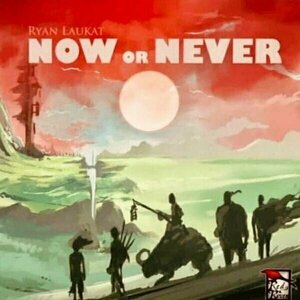
Now or Never
Tabletop Game
Far to the south of The Last Ruin lies a cliffside village called The Monument. For generations, it...
Haley Mathiot (9 KP) rated Icons (Icons, #1) in Books
Apr 27, 2018
This book had a lot of potential, and I was really getting into it… before I just got too out of it to keep going. Maybe one day I’ll read it again but I stopped at chapter 8.
There are only two reasons why. Which is really too bad because like I said, there was A LOT of potential here.
1. Emotionally sappy. Sap city, guys. "It was like “Our wrists touched and I felt it tingling down my arm and into my toes to the depths of my soul” kind of sappy. Overdramatic is another way to say it. I’ve talked about this before, and I’m sure I’ll talk about it again… romantic scenes are hard to write. But if you suck at them, find a way to tell the romantic story without writing sucky scenes.
2. The story itself was almost a repeat of The Hunger Games. Now I know, there are a lot of major differences, but let’s look at the similarities: An evil all-powerful and all-controlling government, a creepy government leader, a boy and a girl who are totally in love with each other but won’t admit it are trying to bring it down and just get back to the way things are supposed to be, they get brought to the main city and forced to participate in something they don’t want to do but don’t have a choice in… etc. Also, love triangle. Yeah. It’s The Hunger Games but more sci-fi technically advanced.
It just wasn’t for me. That being said, there were a lot of good things about it! It was exciting, it drew you in right away, the characters were distinct, the setting and descriptions were excellent. It was just those two things that kept coming back to me, and I knew there was no way I was going to be able to finish listening to it.
Content/Recommendation: occasional use of light language. Ages 13+
There are only two reasons why. Which is really too bad because like I said, there was A LOT of potential here.
1. Emotionally sappy. Sap city, guys. "It was like “Our wrists touched and I felt it tingling down my arm and into my toes to the depths of my soul” kind of sappy. Overdramatic is another way to say it. I’ve talked about this before, and I’m sure I’ll talk about it again… romantic scenes are hard to write. But if you suck at them, find a way to tell the romantic story without writing sucky scenes.
2. The story itself was almost a repeat of The Hunger Games. Now I know, there are a lot of major differences, but let’s look at the similarities: An evil all-powerful and all-controlling government, a creepy government leader, a boy and a girl who are totally in love with each other but won’t admit it are trying to bring it down and just get back to the way things are supposed to be, they get brought to the main city and forced to participate in something they don’t want to do but don’t have a choice in… etc. Also, love triangle. Yeah. It’s The Hunger Games but more sci-fi technically advanced.
It just wasn’t for me. That being said, there were a lot of good things about it! It was exciting, it drew you in right away, the characters were distinct, the setting and descriptions were excellent. It was just those two things that kept coming back to me, and I knew there was no way I was going to be able to finish listening to it.
Content/Recommendation: occasional use of light language. Ages 13+
ClareR (6054 KP) rated Unsheltered in Books
Nov 21, 2018
I think that this is another ‘marmite book’ - you either love it or hate it. There is no in between. Well, I loved it. I like a meandering tale. Some people look at a really thick book and think “Oh no!” - I think “Let me at it!”. What’s more, I like a book that takes its time and is thoughtful. There’s a lot to think about here.
This book is set in two different eras: modern day Vineland, just before and after Trumps election, and 1870s Vineland, just after Darwin’s groundbreaking novel “Origin of the Species” was published.
Both families live in the same house, and both families are experiencing a house that is crumbling around them. The house seems to represent the political and environmental issues in the modern era, in my opinion, and in the past, a community that is failing.
I really enjoyed all of the family dynamics: an elderly Greek father-in-law who rails against the immigrants and blacks (not for one moment seeing the irony); a daughter who is an eco-warrior/ realist, a son whose wife dies, whilst he is left with their newborn; a wife and mother who becomes the primary caregiver to a tiny baby and her infirm father-in-law; and a father who struggled to retain a post as a university lecturer.
In the past, a modern thinking science teacher battles against a headteacher/ principle (principal?) who will not hear of evolution (angel bridges are mentioned - who knew they were a thing?!), and meets Mary Treat, a biologist who really existed and became well known. She exchanges letters and shares information with Darwin and other famous scientists of the time.
This story had so many layers - I loved it. I could feel the frustration of the characters in their respective times, as they had obstacles which seemed insurmountable to them. However, they weren’t, there were ways around their problems. The ‘getting there’ though, was quite a story!
This book is set in two different eras: modern day Vineland, just before and after Trumps election, and 1870s Vineland, just after Darwin’s groundbreaking novel “Origin of the Species” was published.
Both families live in the same house, and both families are experiencing a house that is crumbling around them. The house seems to represent the political and environmental issues in the modern era, in my opinion, and in the past, a community that is failing.
I really enjoyed all of the family dynamics: an elderly Greek father-in-law who rails against the immigrants and blacks (not for one moment seeing the irony); a daughter who is an eco-warrior/ realist, a son whose wife dies, whilst he is left with their newborn; a wife and mother who becomes the primary caregiver to a tiny baby and her infirm father-in-law; and a father who struggled to retain a post as a university lecturer.
In the past, a modern thinking science teacher battles against a headteacher/ principle (principal?) who will not hear of evolution (angel bridges are mentioned - who knew they were a thing?!), and meets Mary Treat, a biologist who really existed and became well known. She exchanges letters and shares information with Darwin and other famous scientists of the time.
This story had so many layers - I loved it. I could feel the frustration of the characters in their respective times, as they had obstacles which seemed insurmountable to them. However, they weren’t, there were ways around their problems. The ‘getting there’ though, was quite a story!
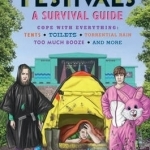
Festivals: A Survival Guide: Cope with Everything: Tents, Toilets, Torrential Rain, Too Much Booze, and More
Book
This illustrated guide is packed with hilarious advice, making it a must have for any festival goer...

